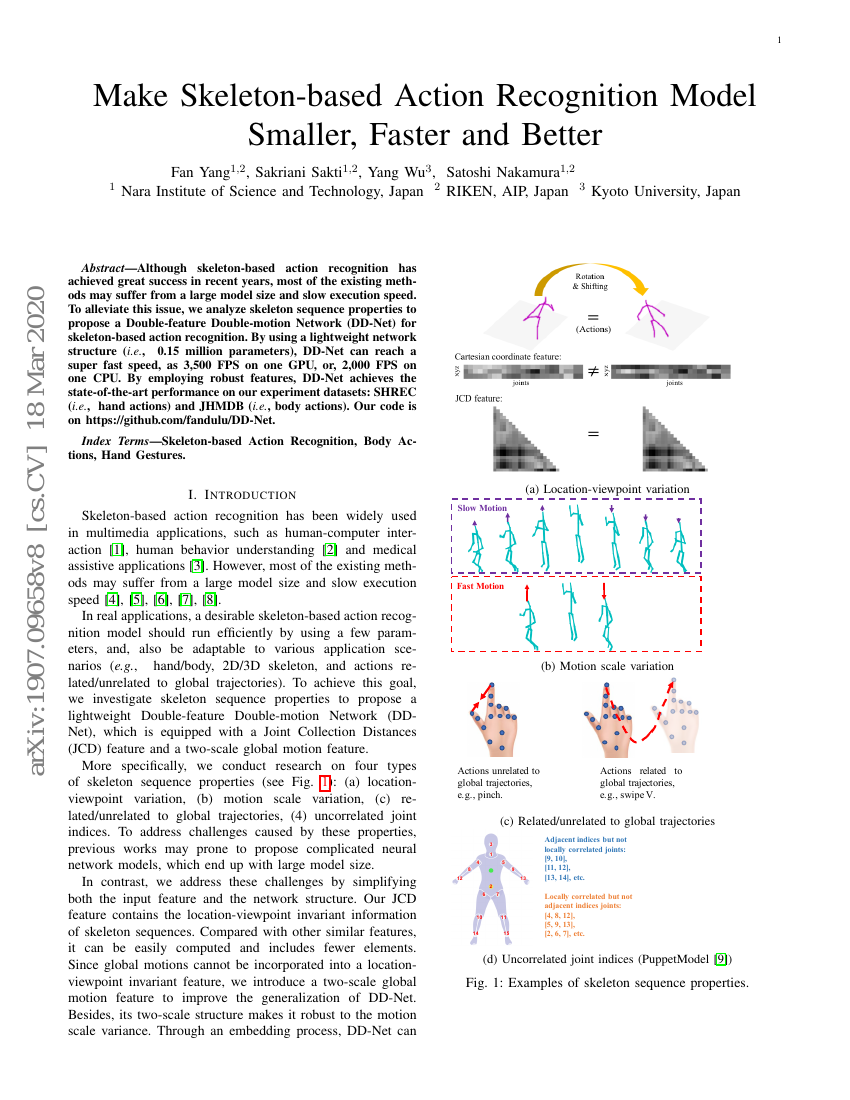Command Palette
Search for a command to run...
Make Skeleton-based Action Recognition Model Smaller, Faster and Better
Fan Yang; Sakriani Sakti; Yang Wu; Satoshi Nakamura

Abstract
Although skeleton-based action recognition has achieved great success in recent years, most of the existing methods may suffer from a large model size and slow execution speed. To alleviate this issue, we analyze skeleton sequence properties to propose a Double-feature Double-motion Network (DD-Net) for skeleton-based action recognition. By using a lightweight network structure (i.e., 0.15 million parameters), DD-Net can reach a super fast speed, as 3,500 FPS on one GPU, or, 2,000 FPS on one CPU. By employing robust features, DD-Net achieves the state-of-the-art performance on our experimental datasets: SHREC (i.e., hand actions) and JHMDB (i.e., body actions). Our code will be released with this paper later.
Code Repositories
Benchmarks
| Benchmark | Methodology | Metrics |
|---|---|---|
| hand-gesture-recognition-on-dhg-14 | DD-Net | Accuracy: 94.6 |
| hand-gesture-recognition-on-dhg-28 | DD-Net | Accuracy: 91.9 |
| hand-gesture-recognition-on-shrec-2017-track | DD-Net | 14 gestures accuracy: 94.6 |
| skeleton-based-action-recognition-on-j-hmdb | DD-Net | Accuracy (RGB+pose): - Accuracy (pose): 77.2 |
| skeleton-based-action-recognition-on-jhmdb-2d | DD-Net | Accuracy: 78.0 (average of 3 split train/test) Average accuracy of 3 splits: 77.2 No. parameters: 1.82 M |
Build AI with AI
From idea to launch — accelerate your AI development with free AI co-coding, out-of-the-box environment and best price of GPUs.